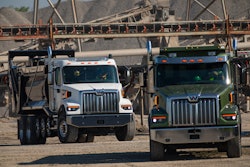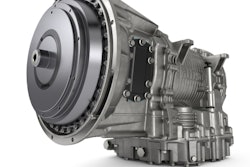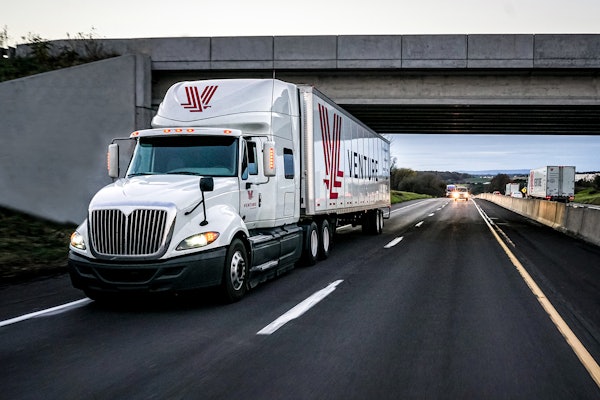Bad news is best delivered early. That old adage came to mind as I contemplated the current disruptions in the supply chain.
The shortage of microchips is all over the news, but there are also issues with steel, lumber, tires and other components that have made it increasingly difficult for vehicle manufactures to complete building both trucks and trailers.
In many cases, manufacturers are parking partially completed vehicles against the fence waiting for needed parts and components to arrive. When the needed component shows up, it gets put into the first trucks that were parked. That can create an additional problem if the truck has been sitting for weeks on end in a field not running. Trucks don't do well when they are parked with the engine not running for long periods of time. And we are hearing about issues with newly delivered trucks needing service work before they can be put into operation.
Just how bad is the situation?
Several OEMs have stopped taking orders for 2022 build slots, although they may open-up slots later once next year’s supply chain – along with pricing issues – become clearer. We also are hearing talk of truck makers moving to allocations for 2022 and possibly 2023, which will limit the available supply of trucks for all buyers.This supply chain issue does not look like it is going to go away anytime soon. One thing that seems to be missing from the discussion of the current supply chain disruption is the importance of communication across the supply chain — starting with the vehicle manufacturer.
Which brings me back to the adage, bad news is best delivered early.
While everyone understands in a general sense that vehicle deliveries are going to be delayed, each fleet needs to know more information surrounding their specific equipment orders. Fleet managers can then use this information to make plans on what changes they need to make in order to continue to meet customer demands in light of the fact that they may not be getting the new trucks they had planned on. The sooner they know the bad news, the sooner they can begin planning ways to work around it.
Not only do fleets need to know about anticipated delivery delays, but they also need to be informed of any potential price increases so they can begin conversations with their funding sources.
Savvy fleets are being proactive about staying in close contact with OE sales reps so if production slots do open, they will be ready to commit to taking delivery of newly available trucks. Fleet managers also need to begin having conversations about long-term equipment needs so that when build slots open for 2023, they can be first in line to place orders.
The other side of the communication equation is the need for fleets to talk with their bank, finance or leasing company about assets that were slated to be traded in, turned in or coming off lease. Because the used truck market is hot — with used trucks selling for tens of thousands of dollars more than they have in the past — the firms financing existing assets want those assets turned in. Fleets are in a bind. There are no rental trucks available to get them through the dearth of new trucks nor can they turn in those older trucks because there are no new trucks to replace them.
The fleet has to talk with its internal finance department and then with the leasing company or funding source to work out a program together because we are in a situation where fleets can’t get trucks, but it is very lucrative for the finance companies or leasing companies to get the old trucks back. The ability of the fleet to extend a lease or finance term is going to depend on the language written into the contract.
This is a time when a strong partnership across the supply chain – from OEM to fleet to funding source – is invaluable. The fleet cannot talk to its funding source about when it is going to turn its trucks in without first having information from the truck maker as to when it is going to be getting new trucks. If you don’t know when you are getting new trucks, you don't know how long you will need to extend your lease or financing.
One other piece of advice for fleets: There have been mid- and late-year price increases, which is a normal part of doing business. Typically, those price increases are minimal, but given material shortages, those increases are likely to be more significant this year, next year and into 2023. If you get a quote from a manufacturer for new trucks, pay close attention to the quote’s expiration date. Vehicle prices could go up significantly in as little as 30 days so make sure to lock in orders and prices.
It doesn’t look like supply chain issues are going to resolve themselves anytime soon. This is a long-term problem that fleets will need a strategy to overcome. A key component of that strategy is communication. The OEM needs to talk to the fleet and the fleet needs to talk to their funding source, but first they have to get all the information from the OEM. Solid communication is the answer in this constantly shifting scenario. That solid communication starts with the OEMs. Without it, fleets cannot develop a strategy for how they are going to operate over the next several years.
Sean Storey is vice president of capital equipment at Corcentric. He provides expert industry analysis and guidance specific to capital equipment for Corcentric and NationaLease fleet customers. Together they are comprised of more than 800,000 trucks, trailers, and warehouse equipment. Prior to joining Corcentric, Storey was Senior Director of Fleet Equipment at Cardinal Logistics Management Corp. with direct management responsibility over the company’s fleet department, equipment purchasing and disposal, fuel program, sourcing of lease financing funds for equipment, rental department, license-permit group and MWS data integrity.











